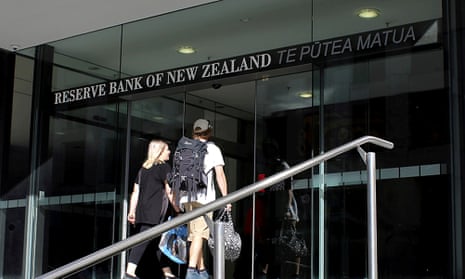New Zealand’s latest inflation data defied widespread predictions it would fall on Tuesday, as it barely budged from a 30-year high, prompting alarm among economists and raising fresh questions over the effectiveness of interest rate hikes.
Prices rose 2.2% in the last quarter, bringing annual inflation to 7.2% – just under the 7.3% recorded at the end of June.
The Reserve Bank had predicted inflation would drop to 6.4% in the last quarter, while economists at major banks anticipated it would fall to somewhere between 6.5% and 6.9%.
The main drivers of inflation were food, housing and household utilities and transport. The cost of vegetables hit its highest level in 23 years. The data showed that domestic (non-tradable) inflation had risen, while imported (tradable) inflation had started to slip downwards.
The finance minister, Grant Robertson, blamed the persistently high numbers on a volatile international environment and said the government would “continue to carefully target spending”, while the National party slammed the figures as “making a mockery of Labour’s claims of a strong economy”.
The Kiwibank senior economist Jarrod Kerr said the gap between the predictions and Tuesday’s actual figure was “alarming”.
“The report was a shocker, to put it politely,” Kerr said, adding that both global and domestic inflation were much stronger than anticipated. Economists had predicted transport costs would push down inflation due to falling petrol prices, but an unexpected 20% rise in international air fares scuppered that.
New Zealand’s central bank was one of the first in the world to target inflation and price stability with interest rate rises, Kerr said, adding that they were “far from it at the moment”.
“Their failure on their mandate is only going to strengthen their resolve to do more – it’s pretty clear they have to hike [interest rates] more and by larger amounts,” Kerr said. “Today’s report will be like a red rag to an inflation fighting bull.”
Kiwibank predicted the Reserve Bank would deliver an “outsized hike” of 75 basis points (rather than 50bp) to the official cash rate in November, with an eventual increase to 5% in 2023. That would create further pressure for households, Kerr said.
“The person on the street is doing it tough at the moment and it is a very awkward outlook for the household at the moment. Most people are now facing much higher interest rates … higher inflation and in many parts of the world including New Zealand we’ve got a falling housing market.”
The effectiveness of interest rate hikes to bring down inflation in the current global context is being questioned in countries like the US, which is also recording persistently high prices and focusing on aggressive rate hikes. Some economists claim that this comes at the expense of dealing with other inflationary culprits such as corporate pricing, rising energy costs and supply chain disruptions.
Edward Miller, a researcher and policy analyst at First Union, warned that hiking interest rates would merely put further pressure on consumers, while doing little to drive down inflation.
“If inflation is being driven by petroleum, fertiliser prices and food prices from Russian war-making, then there is not a huge amount that hiking domestic interest rates can do,” Miller said, adding that these internationally driven price increases are transitory.
“By hiking interest rates, they are loading additional costs on to NZ businesses, which is itself driving up prices; in effect, they are prolonging the problem.”
Miller pointed to the cost of vegetables as an example. While it is too early to tell what has driven the latest spike in vegetable prices – one of the biggest drivers of inflation this quarter – last quarter’s business price index figures showed the biggest increases to horticulture expenses were petrol and fertiliser, followed by rising interest rates.
“All of this should underscore to the Reserve Bank that for the most part we’re not dealing with a demand-driven inflation situation but rather a supply-side jolt, from a combination of Russia’s invasion of Ukraine and post-Covid supply chain shocks.”
